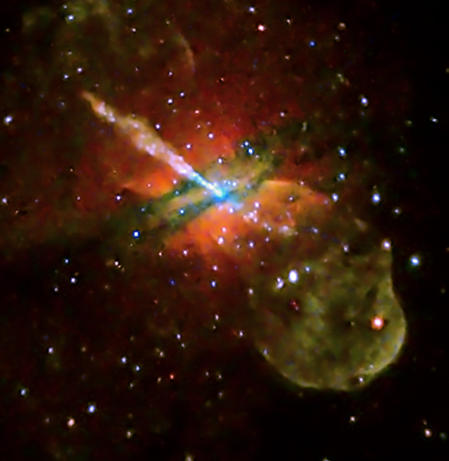FY3403: Particle PhysicsH 2019The lectures give an introduction into particle physics. Prerequisites are a knowledge of quantum mechanics on the level of FY2045 Quantum Physics or TFY4205 Quantum Mechanics. Aim is an understanding of the phenomenological basis of the standard model of particle physics. Lecturer, time and place:Michael Kachelrieß, email; office: E3-126Lectures: Monday 12.15-14.00, EL4 Lectures + Exercises: Wednesday 14.15-16.00, R10 |
 |
Topics covered:
- Particles and interactions of the standard model
- Symmetries and short introduction to group theory
- Hadrons and the quark model
- Dirac equation
- Feynman diagrams
- Scattering processes
- QED
- Weak interactions, the standard model
Plan of the lectures (preliminary)
Week 34: Introduction - the particle zoology and Feynman diagrams [G2] No Lecture WednesdayWeek 35: Symmetries, Lie groups, SU(n) [G4.1, G4.3] , isospin
Week 36: quark model,flavor SU(2) and SU(3) [G4.3, G5.5, G5.6.1]
Week 37: special relativity, relativistic kinematics [G3], Maxwell [G7.4],
Week 38: Dirac equation [G7.1-3].
Week 39: Dirac equation, perturbation theory [6.1-2] Wednesday: 30min extra
Week 40: perturbation theory, Feynman rules and examples QED [G7.5-6], decay widths and cross sections, Wednesday: 1h extra
Week 41: QED/QCD [8.2] Wednesday: no lectures
Week 42: Home exam, no lectures.
Week 43: discrete symmetries [G4.4], weak interactions, neutral current [G9].
Week 44: Lagrangians, field theory, gauge theories [G10.1-6]
Week 45: Higgs effect and electroweak interactions [G10.7-9]
Week 46: fermion mixing, neutrino oscillations [G9.5, G11].
Week 47: Kaon oscillations, CP violation [G4.4], outlook beyond the standard model; questions
Pensum
Lectures follow only roughly the book of Griffiths, but the pensum is defined by the lectures. Exercises are not madatory, the home exam counts 1/3. You can omit from Griffiths Chapter 8.4-6; from Chapter 5 you need to know 5.5 and from 5.6 the reasoning leading to the idea of color.- D. Griffiths, Introduction to Elementary Particles, Second edition, John Wiley & Sons
- My personal favorite: M. Thomson, Modern Particle Physics, Oxford Universty Press.
- Check out the library for other books that suit to you!
Notes of the lectures
I will prepare notes for stuff not covered in the book of Griffiths.Special relativity, the appendix contains additional examples of calculations using the tensor notation.
symmetries, SU(2).
A basic introduction to the index notation of SR.
Exercises
Week 34: Self-study of chapter 1 in Griffiths.Week 35: exercises 1 and questionnaire; solutions and answers.
Week 36: exercises 2 and solutions.
Week 37: exercises 3 and solutions.
Week 38: exercises 4 and solutions.
Week 39: exercises 5 and solutions.
Week 40: exercises 6 and solutions.
Week 44: exercises 7 and solutions plus attachement.
Week 45: exercises 8 and solutions.
Week 46: exercises 9 and solutions plus attachement.
Corrections:
Typos in exercises, solutions:- Week 36: Exercise 2): \( \det(U) = \det(\tilde U) =\exp(i\: \tilde H)\) should be \( \det(U) = \det(\tilde U) =\det\exp(i\: \tilde H)\) .
- Week 39: Exercise 1): The last part should be "and \(\gamma^i\gamma^0 = i\sigma^i\otimes (i\tau_1)\). Thus \(\{\gamma^0,\gamma^i\} = i\sigma^i\otimes i(-\tau_1+\tau_1) = 0\)."
- Week 39: Exercise 3.b): The last matrix on p.2 should be off-diagonal; on p.3 \([\sigma_z,\sigma_x]=+2i\sigma_z\) should be \( [\sigma_z,\sigma_x]=+2i\sigma_y\).
- Week 40: Exercise 4.c): Add a factor \(1/4\pi\), as we use HL units.
Reduce
REDUCE is a portable general-purpose computer algebra system which has some useful built-in functions for the evaluation of gamma matrices. Please check out its webpage, download (see here ) and install it on your laptop. Let me know if you don't manage.Home exam
The home exam will start Friday, October 11 at 09.00. You can download the home exam here. Please return your solutions latest Friday, 18.10. at 15.00 either putting them into my mailbox in D5-175 or sending them by email. For an example, you can have a look at the one from last year. The solutions are here, with additional notes here.Old exams
and solutions are here. The exam from 2018:Exam
takes place 2. December, 15.00. The official webpage states "FORMELSAML" as the permitted examination aids. My interpetation: The offically allowed mathematical tables (Rottmann). However, it will be of no use; the relevant formulas will be appended to the exam.You can download the solution here.
Marks:
- 10001: B
- 10002: C
- 10003: C
- 10004: C
- 10005: B
- 10006: C
- 10007: B
- 10008: A
- 10010: F
- 10011: C
- 10013: B
- 10014: B
- 10015: A
- 10016: B
- 10017: C
- 10018: C
- 10019: A
- 10020: C
- 10023: A
- 10024: A
- 10025: D
- 10026: C
- 10027: F
- 10031: B
- 10034: B
- 10035: B
Reference group
Useful links
the particle data group PDG, the authoritative source of information on elementary particles.A (perhaps too light-minded) site as introduction to particle physics.

